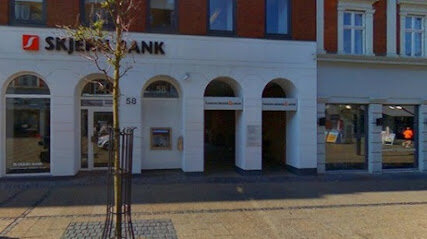Best Land Use & Zoning Lawyers in Esbjerg
Share your needs with us, get contacted by law firms.
Free. Takes 2 min.
Free Guide to Hiring a Real Estate Lawyer
List of the best lawyers in Esbjerg, Denmark
About Land Use & Zoning Law in Esbjerg, Denmark
Land use and zoning law in Esbjerg is governed primarily by national planning legislation together with municipal planning rules set by Esbjerg Kommune. These rules determine what kind of development is allowed where, how land may be used, and what approvals are required before construction or change of use. Planning is structured on several levels - national and regional policy frameworks, the municipal plan, and local plans that regulate specific areas. Additional legal regimes - for example building regulations, environmental law, heritage protection, and coastal protection - interact closely with planning law and can affect projects in Esbjerg, especially because Esbjerg is a coastal city with port, industrial and wind-energy activity.
Why You May Need a Lawyer
You may need legal help with land use and zoning in Esbjerg in many common situations. A lawyer can explain applicable plans and rules, prepare and review applications, represent you in meetings with the municipality, draft or negotiate agreements that affect land rights, and handle administrative appeals or court proceedings if a permit is denied or a dispute arises.
Typical situations that benefit from legal advice include:
- Applying for or defending against refusals of building permits and dispensation requests.
- Challenging municipal planning decisions or appealing to the planning appeals body.
- Buying or selling property where easements, servitudes or zoning restrictions may affect value or use.
- Resolving neighbour disputes about boundaries, access rights, or unlawful uses.
- Responding to environmental or heritage constraints, including Natura 2000 or protected building issues.
- Handling expropriation or compulsory acquisition processes and claiming compensation.
Local Laws Overview
Key legal elements to understand when dealing with land use and zoning in Esbjerg include the following.
- Planning hierarchy: National and regional planning frameworks set broad objectives. Esbjerg Kommune adopts a municipal plan that sets overall directions for land use within the municipality, and local plans regulate detailed land use, building form, density, roads and public spaces for specific areas. Where a local plan exists, it takes precedence for project-specific rules.
- Local plans and changes: Local plans are prepared and adopted by the municipality. They are public and indicate permitted uses, building heights, parking requirements, green space and infrastructure. Changes or new developments often require a local plan or a change to an existing plan.
- Building permits and building rules: Construction and significant alterations generally require a building permit and must comply with the Danish Building Regulations. Technical requirements cover safety, energy performance, and fire protection. The municipality handles building permit cases and inspections.
- Coastal and environmental protections: Esbjerg’s coastal location means additional constraints are common. Coastal protection zones and national rules on coastal development may restrict building near the shore. Natura 2000 areas, wetlands and other protected habitats trigger environmental assessments and stricter controls.
- Heritage and archaeology: Listed buildings and archaeological sites are protected under separate rules. Any development affecting listed or conservation-worthy buildings or archaeological finds requires coordination with heritage authorities and may limit allowable work.
- Property rights and registers: Rights such as easements, servitudes and mortgages are registered in the Danish land registry. These rights can restrict use and must be checked during property transactions or development planning.
- Public participation and appeals: Planning processes include public consultation periods where citizens can comment. If a permit or plan decision is disputed, administrative appeals can typically be lodged with the competent planning appeals body and, where relevant, further judicial review may follow.
Frequently Asked Questions
How do I find the zoning and applicable plan for a specific property in Esbjerg?
Start by contacting Esbjerg Kommune’s planning department or using the municipality’s property and planning maps. The municipal plan and any local plans that cover the property will indicate allowed uses, building rules and restrictions. For legal certainty, request official documentation or a written statement from the municipality.
What is the difference between a municipal plan and a local plan?
The municipal plan provides broad long-term strategies and framework for development across the entire municipality. A local plan is more detailed and regulates specific plots or neighbourhoods - it sets precise rules on land use, building height, density, street layout and public spaces. Projects must comply with applicable local plans.
Do I always need a building permit to construct or change a building?
Many projects require a building permit, especially new construction, major alterations, changes of use, and projects that affect the structure or the building envelope. Small, clearly defined minor works may be exempt, but it is important to check with the municipality before starting work to avoid fines and orders to halt or remove unauthorised work.
Can I build near the coast in Esbjerg?
Coastal areas are often subject to special restrictions to protect the shoreline, recreation values and nature. Coastal proximity rules and local coastal plans can limit where and what can be built. For any coastal project, consult municipal planners and coastal authorities early to assess feasibility and likely requirements.
What is a dispensation and how do I apply for one?
A dispensation is an exemption from a planning rule or local plan provision. Municipalities can grant dispensations in specific and justified cases, but they are exceptions and not guaranteed. A dispensation application typically requires a clear explanation of why the rule should not apply, supporting technical material, and an assessment of impacts on neighbours and the local area.
What can I do if the municipality refuses my permit or dispensation?
You can request a written decision with reasons and then file an appeal with the relevant planning appeals body within the deadline stated in the decision. A lawyer can help prepare the appeal, gather evidence, and represent you in the administrative process. If necessary, judicial review in court may be a next step after administrative remedies are exhausted.
How are environmental concerns handled for development projects?
Depending on the type and scale of the project, an environmental assessment or screening under national rules may be required. Projects that may affect protected habitats, water quality or significant pollution sources are subject to stricter review. You should identify environmental constraints early and obtain any required approvals or impact assessments.
Can the municipality expropriate my land in Esbjerg?
Expropriation or compulsory acquisition is possible under Danish law where it is necessary for public purposes, such as infrastructure or public projects. The municipality must follow formal procedures and provide compensation. If you face expropriation, seek legal advice promptly to protect your interests and ensure proper valuation and compensation.
Do heritage or archaeological protections apply in Esbjerg?
Yes. Listed buildings, conservation-worthy buildings, and archaeological finds are protected. Work that affects such resources requires consultation and approvals from heritage authorities. Discoveries during excavation must be reported and may halt or change the project until the issue is resolved.
How long does the planning and permitting process usually take?
Timeframes vary by project complexity. Simple building permits can take weeks to a few months, while projects requiring local plan changes, environmental assessments, or appeals can take many months or more than a year. Early engagement with the municipality and professionals helps to estimate timelines and avoid unnecessary delays.
Additional Resources
Esbjerg Kommune - the municipal planning and building department handles local plans, building permits, consultation and official maps. Contact the municipality for property-specific information and guidance.
Municipal property and planning maps - available through the municipality for checking local plan coverage and zoning information.
National planning legislation and guidance - national planning frameworks and the Danish Planning Act set the legal basis for municipal planning and local plans.
Building Regulations - rules on construction, safety and energy performance that apply when you seek a building permit.
Nature and environmental authorities - national agencies responsible for protected areas, Natura 2000, and environmental impact matters, including coastal protection authorities for shoreline projects.
Land registry and title records - for searches on easements, mortgages and registered rights affecting a property.
Planning appeals body - the authority that handles administrative appeals against municipal planning decisions.
Next Steps
1. Gather basic information - identify the property by address or parcel number and collect existing documents such as purchase deeds, title information and any previous permit decisions.
2. Contact Esbjerg Kommune - ask the municipal planning or building department about which plans and rules apply to your property, and whether your project needs a local plan change, a building permit, or an environmental assessment.
3. Seek professional advice - for complex matters, engage a lawyer with expertise in Danish land use and zoning law and, where appropriate, a planning consultant, architect or environmental specialist to prepare applications and technical documentation.
4. Prepare your application carefully - ensure you include required plans, technical reports and a clear justification for any dispensation requests. Early dialogue with the municipality can reduce delays.
5. Be ready to participate in consultations - planning processes include public consultation. Prepare to address neighbour concerns and provide clear information about impacts and mitigation measures.
6. Consider appeals and enforcement - if a decision is unfavourable, consult your lawyer about appeal options and timelines. If you face enforcement actions, act quickly to protect your rights.
If you are unsure how to proceed, arrange an initial consultation with a lawyer experienced in land use and zoning in Esbjerg to get a practical assessment of your options and risks.
Lawzana helps you find the best lawyers and law firms in Esbjerg through a curated and pre-screened list of qualified legal professionals. Our platform offers rankings and detailed profiles of attorneys and law firms, allowing you to compare based on practice areas, including Land Use & Zoning, experience, and client feedback.
Each profile includes a description of the firm's areas of practice, client reviews, team members and partners, year of establishment, spoken languages, office locations, contact information, social media presence, and any published articles or resources. Most firms on our platform speak English and are experienced in both local and international legal matters.
Get a quote from top-rated law firms in Esbjerg, Denmark — quickly, securely, and without unnecessary hassle.
Disclaimer:
The information provided on this page is for general informational purposes only and does not constitute legal advice. While we strive to ensure the accuracy and relevance of the content, legal information may change over time, and interpretations of the law can vary. You should always consult with a qualified legal professional for advice specific to your situation.
We disclaim all liability for actions taken or not taken based on the content of this page. If you believe any information is incorrect or outdated, please contact us, and we will review and update it where appropriate.








